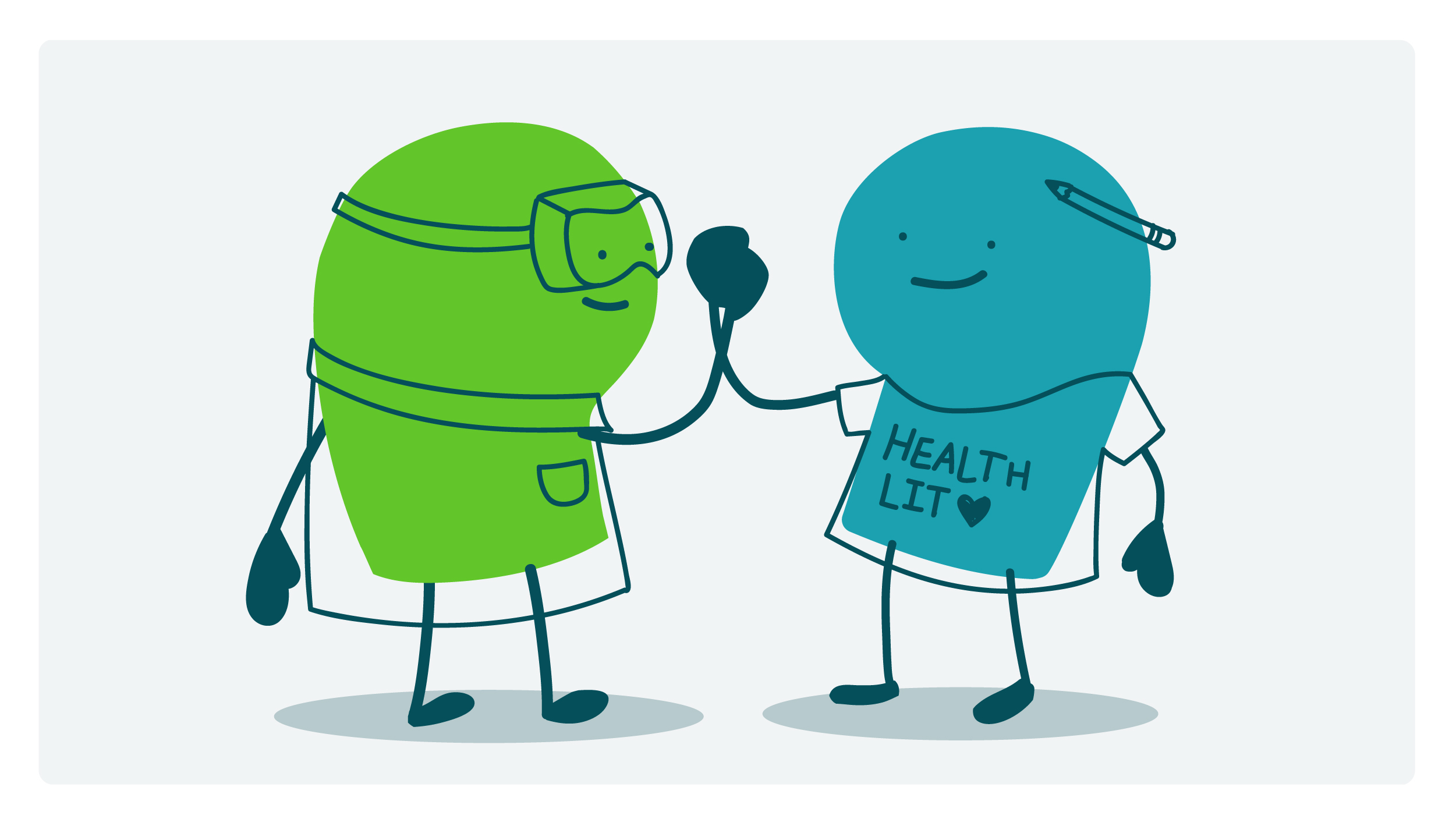
Here at We ❤️ Health Literacy HQ, we know clear communication makes everything better — but that won’t stop us from shouting it from the rooftops whenever we get the chance! And today, we’re talking about how health literacy and clear communication best practices can improve clinical trials.
The process of developing COVID-19 vaccines and treatments highlighted just how important clinical trials are to our health care system. It also revealed lots of gaps in how much people know about them and how they work. Using health literacy best practices in communication can help bridge that gap, and we can start by explaining clinical trials in plain language — from the basic definition to vaccine trial phases.
But it’s just as important to think about communication within clinical trials. That’s because using health literacy strategies can help build trust in the clinical trial process. The pandemic has shown how important it is that people not only feel it’s safe to enroll in clinical trials — but also that they trust the results of those trials. And you might (not) be surprised to hear, dear readers, that we’d say the best way to build trust is to communicate clearly and transparently about every step of the clinical trial process, starting with…
…enrollment! Research shows that when people don’t understand why clinical trials are important and how they work, they’re much less likely to consider participating in one — even if they could benefit from getting a trial treatment. Clear communication strategies can help reach and recruit people who might otherwise be left out of the process.
To be clear, there are lots of systemic problems that can keep people from enrolling in clinical trials — implicit racism and bias in the health care system, lack of access to health care and insurance, and a shortage of medical centers in rural areas that can facilitate clinical trials, to name a few.
Health literacy strategies alone won’t solve these issues. But they can help people understand exactly what participating in a clinical trial entails — including possible risks and benefits. Complex, jargon-y materials are a huge barrier to clinical trial participation, especially for people who have lower literacy skills or whose first language isn’t English. Making sure consent forms and other materials are easy to understand and translated into different languages can help address these weighty — and often undiscussed — barriers.
But clear communication doesn’t only help people enroll in trials. Clear instructions throughout the trial help participants follow trial protocols, like taking a drug correctly and scheduling regular visits with their trial doctor. This leads to more reliable results — not to mention less stress and better outcomes for participants.
Finally, communicating clinical trial results in a way that’s accessible to everyone can build trust in those results. And when people trust the results of trials, they’re more likely to make research-backed health decisions, which lead to better health outcomes. We can’t think of a better reason to shout (in plain language) about clinical trials from the rooftops.
The bottom line: Health literacy and clear communication strategies can improve all aspects of clinical trials — and that’s more important than ever.
Post about it: CommunicateHealth explains why using #HealthLiteracy strategies to communicate about — and within — clinical trials is so important. Check it out: https://bit.ly/3MLTnOZ
Browse recent posts